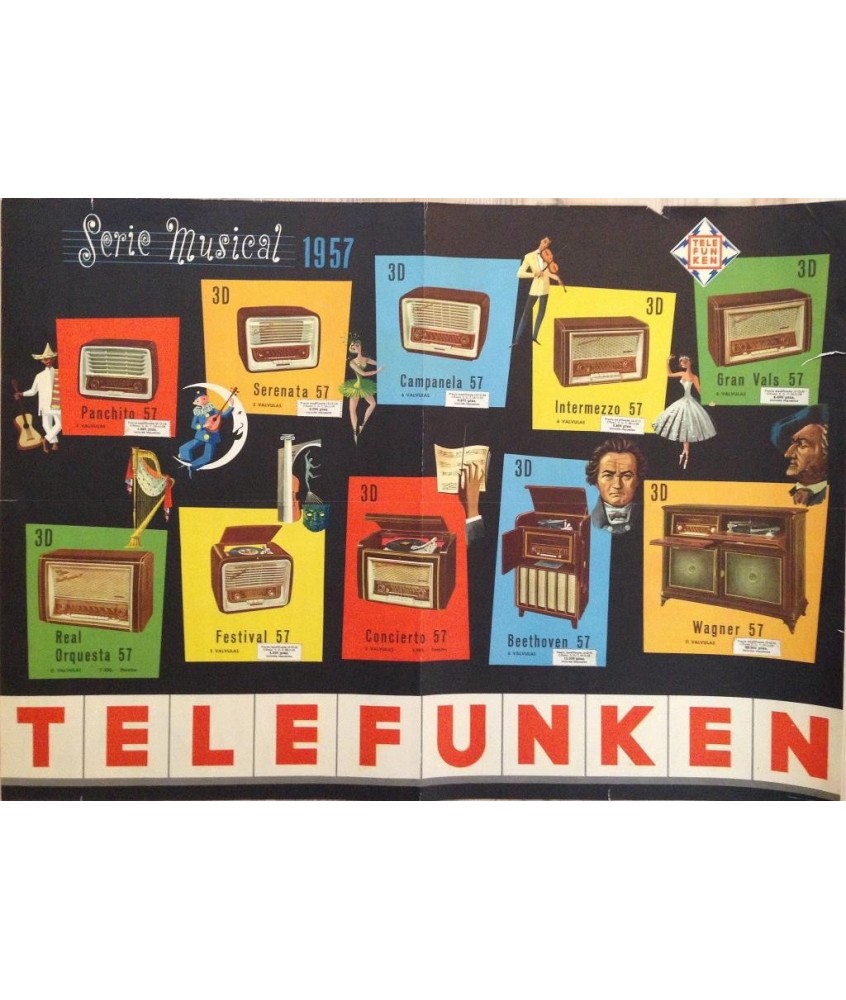


Telefunken is a German company that manufactures radio and television sets, founded in 1903. At the beginning it was a commercial project between AEG and Siemens & Halske, until Siemens abandoned it in 1941.
Telefunken es una empresa alemana de fabricación de aparatos de radio y televisores, fundada en 1903. Al principio era un proyecto comercial entre AEG y Siemens & Halske, hasta que Siemens lo abandonó en 1941.
En 1911 el Káiser Guillermo II envió ingenieros de Telefunken a West Sayville, New York para levantar tres torres de radio de 180 metros de altura, contando con la colaboración de Nikola Tesla. Una estación de similares características fue construida en Nauen, estableciendo así la única red inalámbrica de comunicaciones entre América del Norte y Europa. En 1967 se fusionó con AEG, con lo que pasó a conocerse como AEG-Telefunken. Cuando AEG fue comprada por Daimler en 1985, la marca "Telefunken" fue eliminada. La marca comercial "Telefunken", no obstante, sigue siendo comercializada por DaimlerChrysler.
Walter Bruch desarrolló el sistema PAL de televisión en color en Telefunken; este sistema es el más utilizado en los sistemas televisivos fuera del continente americano hoy en día. Telefunken | USA™ fue constituida en 2001 para proporcionar servicios de renovación y fabricación de micrófonos Telefunken en Estados Unidos.
En 2005, Telefunken SenderSysteme Berlin fue renombrada Transradio SenderSysteme Berlin AG. La marca Transradio data de 1918, cuando Transradio fue fundada como una subsidiaria de Telefunken. Un año después, en 1919, Transradio introdujo la transmisión dúplex. Transradio está especializada en la investigación, desarrollo y diseño de sistemas modernos de radiodifusión en OM, VHF/FM y otros sistemas de comunicación internacional mediante ondas de radio.
CLASSIFICATION OF THE POSTERS ACCORDING TO THEIR CONSERVATION (in bold the one corresponding to this poster):
A+ Is a flawless example of a poster rarely seen in such fine condition.
A Designates a poster in very fine condition. There may be some tears on the margins, but not noticeable. No paper loss. Colours are fresh and has no blemish.
A- There may be some slight fold marks, tear or other minor defect, but most unobtrusive. Successful restoration if restored.
B+ If some restoration it is not immediately evident.
B Designates a poster in good condition. There may be some tears. Blemish or paper loss, but not in any crucial design area. Colours are fresh and the poster has a very good appearance.
B- Restoration may show some defects. Colours along the fold marks are faded.
C+ Restorations are visible.
C Designates a poster in fair condition. Tears, blemish, fold marks and or paper loss are more pronounced or may slightly affect the image of the poster. Colours may be faded.
C- Requires restoration.